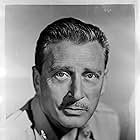The female editor of a crime magazine hires Phillip Marlowe to find the wife of her boss. The private detective soon finds himself involved in murder.The female editor of a crime magazine hires Phillip Marlowe to find the wife of her boss. The private detective soon finds himself involved in murder.The female editor of a crime magazine hires Phillip Marlowe to find the wife of her boss. The private detective soon finds himself involved in murder.





































